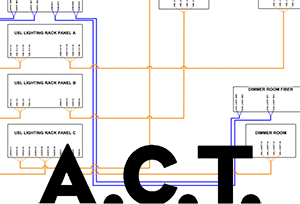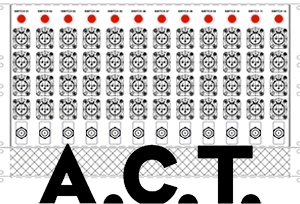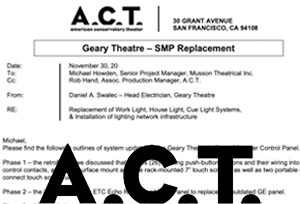ACT Geary Theatre | San Francisco, CA
Part 2: Determining a Path Forward - Upgrade Plans
As I briefly touched on during my previous post, the Geary theatre relied upon two integrated systems that were installed in 1995 to allow for remote and local control of every light in every room related to production within the facility itself. The light switches on the wall in each space, and those on the stage manager panel (SMP), sent midi note signals to an ETC Insight control unit that trigger the intended action to happen. For example when you push a little red button on the wall at the stairwell to the theatre's grid, it triggers a specific midi note (90 10 7F for example) to be sent to the Insight control unit, which would trigger a programming event that sent a value of 255 to a specific DMX address (129 in this example). All of this would happen in the background, just for the light switch on the wall to turn on the fluorescent lights only a few feet away. After the Insight control unit (acting as this interface between light switches in the theatre and the relays sending power to those lights) that stopped working in June 2017, the venue was dark without a new control system, and the temporary system I programmed was not a permanent solution.
With the need for significant upgrades to the venue's lighting infrastructure shifting from distant possibility to a more pressing reality, I worked with the production management team to assess the needs and find a solution that was both a financially viable and still a sound investment in the stable system required for future use. The overall upgrade project would be split out into four phases, each culminating in achieving individual objectives.
- Return sustainable functionality to the (26) existing light switches around the facility.
- Replacing the failing relay panel that controlled power to most of these lights.
- Installing a robust network infrastructure to provide network switching and distribution.
- Build an updated cue-light system to replace the failing system inherent to the SMP.






